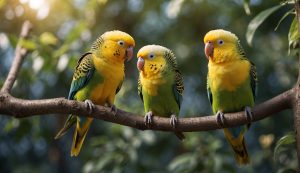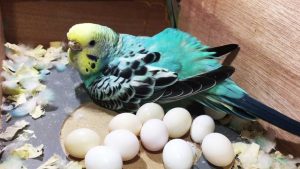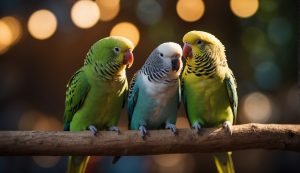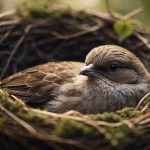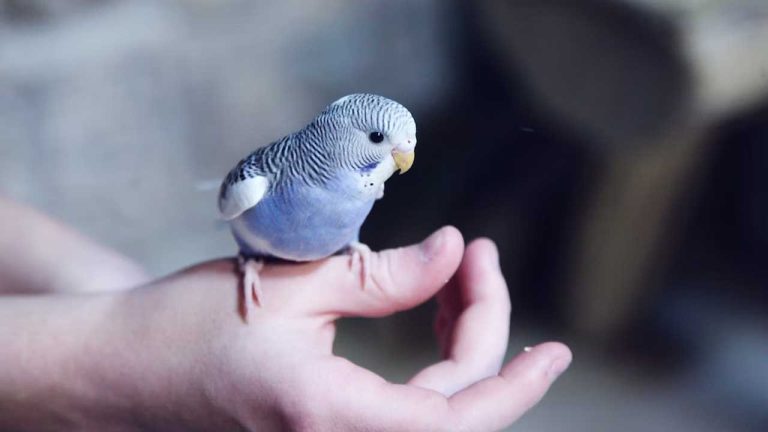What Do Parakeets Use to Make a Nest: Essential Materials for Your Feathered Friend’s Home

Parakeets, known for their vibrant colors and social nature, give special attention to creating a cozy and secure nest for breeding.
When looking for suitable nesting sites, these birds show a preference for cavities, which offer protection from predators and the elements.
While in the wild, parakeets may choose holes in trees, the situation differs for those living in urban areas or when kept as pets. Here, the use of nesting boxes becomes crucial as a substitute for their natural nesting sites.
The selection of a nesting box and its placement are vital to encourage breeding and ensure the comfort and safety of the parakeets.
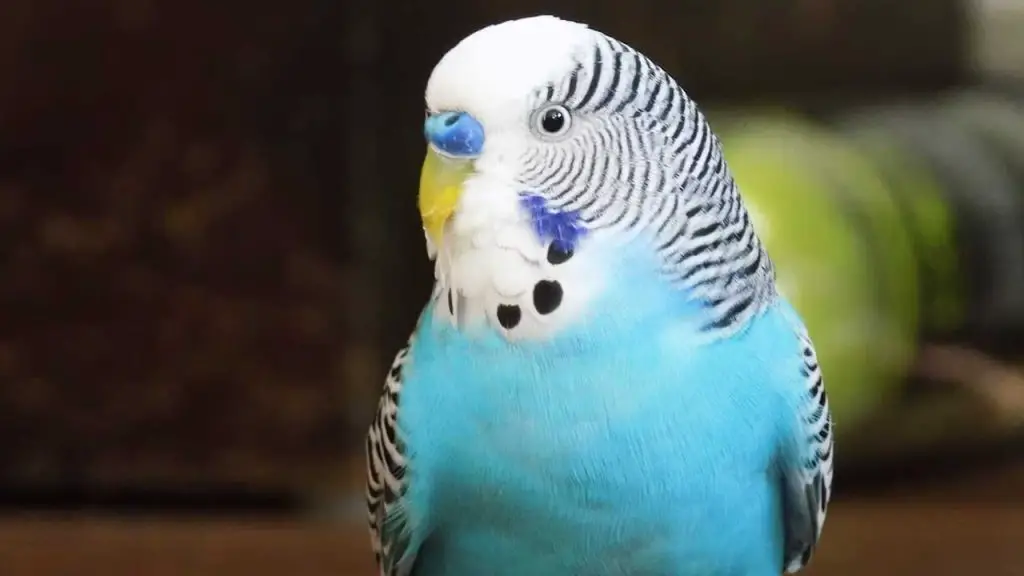
Once a nesting location is secured, the focus shifts to the materials used to build the nest.
In their natural habitat, parakeets may use an assortment of twigs, leaves, and other plant materials to construct their nests.
But pet parakeets rely on the materials provided by their caretakers.
These may include softwood shavings, untreated paper, or other safe, non-toxic materials that do not pose health risks.
It is important that these materials are clean and free from anything that could harm the parakeets or their offspring.
Through this process, I ensure that their space is not only comfortable but also promotes the health and welfare of my feathered friends.
Key Points
- Nest site selection and proper nesting material are key for parakeet breeding success.
- Comfort and health of parakeets are paramount when preparing for breeding.
- Post-breeding care involves cleanliness and monitoring for the well-being of parakeets and their chicks.
Table of Contents
Choosing the Right Nesting Box
When I set out to pick a nesting box for my parakeet, my focus is always on their comfort and safety. Here’s how I make the best choice for them.
Materials and Safety
I choose wooden nest boxes because they’re durable and safe for parakeets.
The wood should be untreated and non-toxic to ensure my bird’s health isn’t compromised.
I check for any sharp edges or splinters and make sure that the box is free from chemicals and varnishes that could harm my parakeet.
Size and Design
The size of the nesting box is crucial—it must be spacious enough for my parakeet to move around comfortably.
Generally, the box should be large enough to accommodate the bird and their potential offspring.
A typical size I opt for is:
- Width: 8 inches
- Depth: 8 inches
- Height: 10 inches
The design should include a small entrance hole—one that allows my parakeet easy access but offers privacy and deters potential predators.
I seek out designs that have a side door for easy cleaning and inspection.
Placement and Security
I ensure the nesting box is fixed securely where there’s little disturbance, but where I can still easily observe and access it.
I find a sheltered location that protects my parakeet from harsh weather.
The box should be positioned at least five to six feet off the ground to keep it safe from ground predators.
I always double-check that the box is stable and won’t swing or fall, ensuring a peaceful and secure nesting environment for my bird.
Nesting Materials and Comfort
When I think about making a nest cozy and warm, I focus on choosing the best bedding and ensuring it retains heat for the comfort of the little ones.
Appropriate Bedding Choices
For my parakeet’s nest, I’ve discovered a variety of materials that work excellently.
I often line the nest with wood shavings or straw, as these are both absorbent and soft, creating a comfortable layer.
- Wood shavings: Ideal for the base as they are soft yet supportive.
- Shredded paper: A good use of recycled paper, it’s soft and cozy.
- Soft materials: Bits of fabric or felt can add a plush feel.
- Natural materials: If I can find small twigs or leaves, I include them to mimic a natural nesting environment.
Maintaining Warmth and Coziness
To ensure warmth in the nest, I pay attention to the insulating properties of the nesting materials.
- Feathers: Adding a few feathers can trap air and keep the nestlings warm.
- Straw and wood shavings: Their structure also helps retain body heat.
- Layering: I layer different materials to create an insulated and cozy nest where cold air is kept out and warm air stays in.
Keeping the nest warm is crucial, especially in cooler climates or during the night when temperatures drop.
Breeding and Nest Preparation
Breeding parakeets need a comfortable and secure environment. I ensure the nest has the right materials and conditions to support their breeding behavior, from nest preparation through egg laying and incubation.
Encouraging Breeding Behavior
I’ve observed that several factors influence the start of the breeding season for parakeets.
Hormonal changes often trigger breeding readiness, which can be influenced by environmental cues such as daylight exposure and temperature.
To encourage breeding behavior in my parakeets, I ensure they have a stable and stress-free environment.
I often use a nest box, placed in a quiet area, to mimic the natural nesting sites and make them feel secure.
The nest box is filled with suitable nesting materials, such as wood shavings or shredded paper, allowing the female to engage in nest preparation.
- Nesting Box Placement: Private, secure area
- Environmental Cues: Adequate daylight, stable temperatures
Laying and Incubating Eggs
Once breeding season commences and the nest is prepared, my female parakeet lays her eggs.
The number of eggs can vary, typically ranging from four to six.
After laying, the incubation process starts, lasting about 18 to 20 days before the eggs hatch.
During this time, the female will spend most of her time in the nest, keeping the eggs at a consistent temperature.
I monitor the humidity and temperature within the nest box without disturbing the parakeets too much, ensuring they are comfortable.
- Egg Count: Usually 4-6 eggs
- Incubation Period: Approximately 18-20 days
- Monitoring: Check humidity and temperature regularly
Health and Welfare in Nesting
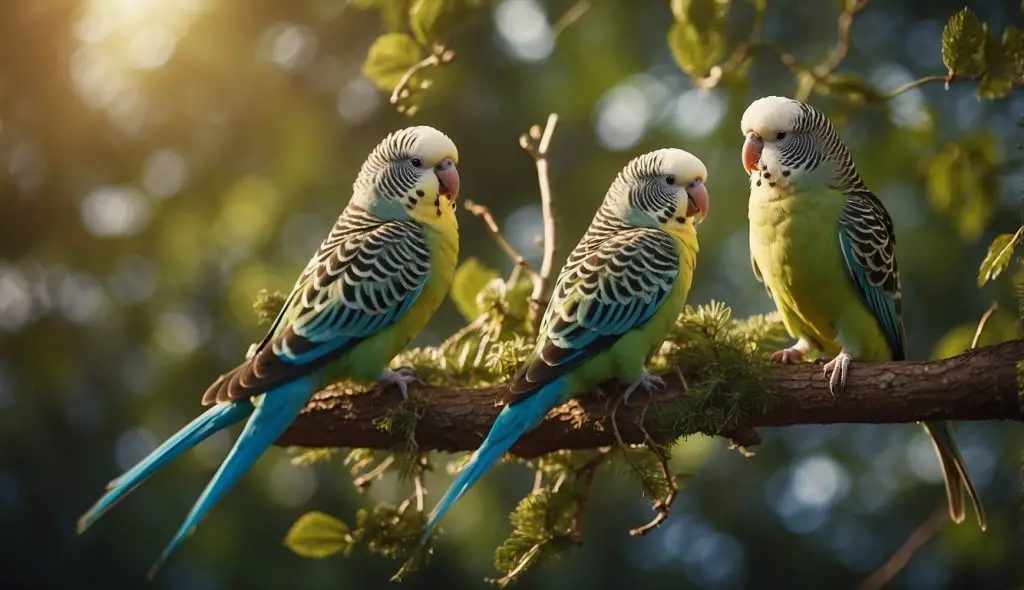
When I ensure the nesting environment for my parakeet is secure and comfortable, it significantly contributes to their overall well-being.
My focus is on preventing health issues that can arise from unsanitary or unsafe nest conditions, as well as maintaining a routine of regular monitoring and care to support their health and welfare while nesting.
Preventing Health Issues
To prevent health problems, I prioritize the safety and cleanliness of the nesting area. Here’s how:
- Nest Material: I select safe, non-toxic materials like untreated wood shavings or paper for my parakeet to build its nest, avoiding materials that could harbor mold or parasites.
- Nest Location: It’s crucial to place the nesting box in a secure spot, sheltered from extreme temperatures and direct sunlight, to protect the bird’s health and prevent overheating or hypothermia.
Regular Monitoring and Care
Regular check-ins are vital for spotting potential health concerns early. My approach includes:
- Daily Observation: I look for signs of distress or illness in my pet parakeet when they interact with the nest, such as reluctance to enter the nesting box or abnormal behavior.
- Veterinary Support: If I notice any health problems, I promptly consult with an avian vet to get expert assistance and treatment. Regular vet check-ups help maintain my parakeet’s health, especially during the nesting period.
Post-Breeding Care
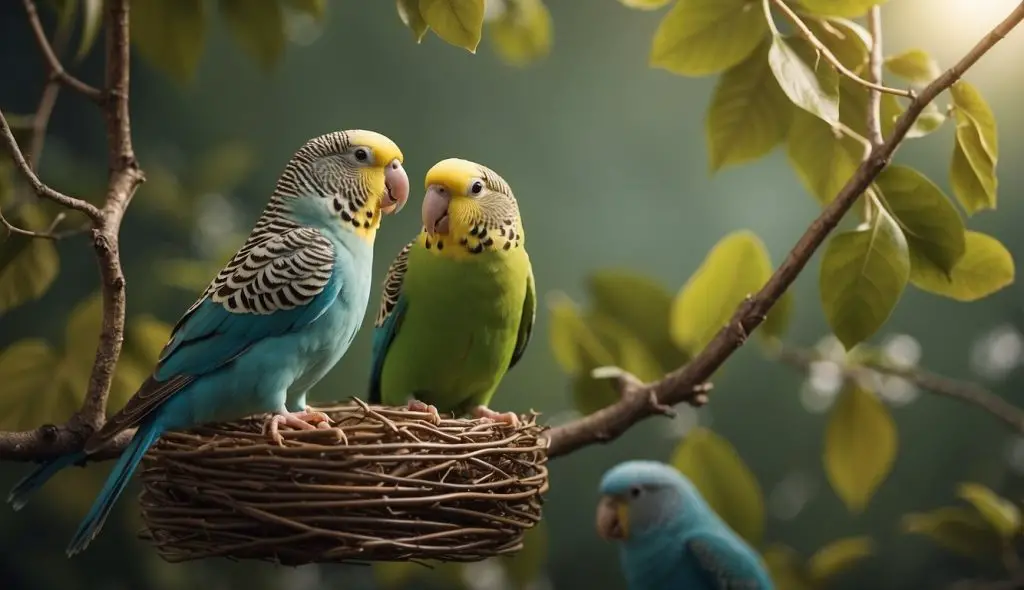
After the breeding season, my primary focus shifts to ensuring that the newborn parakeets are properly cared for, which includes providing adequate food and a safe environment.
Once the babies are weaned, they can be moved to a separate cage for their continued development and independence.
Caring for Newborn Parakeets
In my experience, newborn parakeets require a considerable amount of care.
I always make sure that the breeding pairs have everything they need to feed and nurture their hatchlings.
The babies typically depend on their parents for food, which means I keep a steady supply of high-quality seed mix, fresh fruits, and vegetables available.
Protein-rich foods like boiled eggs or special parakeet chick formula are essential during this stage for proper growth.
To keep the newborns safe and comfortable, I maintain the nest box within the breeding cage. It’s lined with soft materials like shredded paper or coconut fiber, which the parents used to create a cozy environment for their brood.
Weaning and Separation
The weaning process for baby parakeets begins around 4 to 6 weeks after hatching. This is when I introduce them to a variety of seeds and millets, along with softened fruits and vegetables. It’s a gradual process, but an important one as it leads to their independence.
I consistently monitor their growth and ensure they are adapting well to the new diet.
Once I observe that the youngsters are eating solid food consistently and are no longer dependent on their parents for feeding, it’s time to consider housing them separately. I prepare a separate cage with ample space, perches, and their own food and water dishes.
This move encourages them to become more independent and social with humans and other birds while reducing the stress on the parents, who are likely gearing up for the next breeding cycle.
Frequently Asked Questions
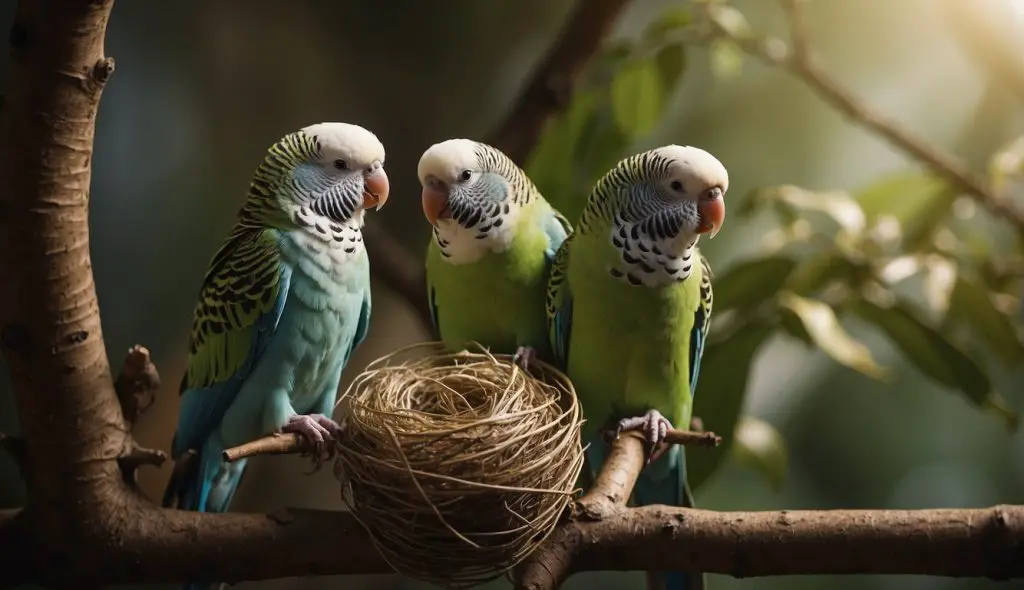
In this section, I’ll cover some essential points about creating and maintaining a suitable nesting environment for parakeets.
You’ll find information on safe materials, appropriate dimensions for nesting boxes, and typical nesting behaviors, which will help you offer the best care for your feathered friends.
How can I create a comfortable nesting environment for a parakeet at home?
To ensure my parakeet has a comfortable nesting environment at home, I provide a nesting box that’s secure, quiet, and lined with safe, soft materials such as shredded paper or soft wood shavings to mimic their natural nesting preferences.
Which materials are safe and comfortable for parakeet nesting?
I use materials like shredded paper, soft wood shavings, and untreated cotton fibers for my parakeet’s nest. It’s crucial to avoid materials that might be toxic or could potentially entangle their feet, like plastic strings or synthetic fibers.
What are the ideal dimensions for a parakeet nesting box?
A nesting box for parakeets should be spacious enough for the bird to move around comfortably. I ensure mine measures at least 12 inches deep, 12 inches high, and 18 inches wide, with an entrance hole that’s about 2 to 3 inches in diameter.
How can I set up a nesting box for budgies using cardboard?
I can set up a temporary nesting box using a sturdy cardboard box by cutting an appropriate-sized entrance hole, securing all flaps, and lining the bottom with safe nesting materials. However, for long-term use, I prefer a wooden box for durability.
What types of nesting behavior should I expect from my parakeet?
When nesting, I expect my parakeet to exhibit behaviors such as gathering nesting materials, seeking privacy, and the female may spend more time in the nesting box as she prepares for egg-laying.
How do parakeets typically nest when living in their natural habitat?
In their natural habitat, parakeets often use tree cavities or hollows as nesting sites. They seek out areas that provide protection from predators and environmental elements.
Some parakeet species, like monk parakeets, are known to build large communal nests. This is unique among parrots.

